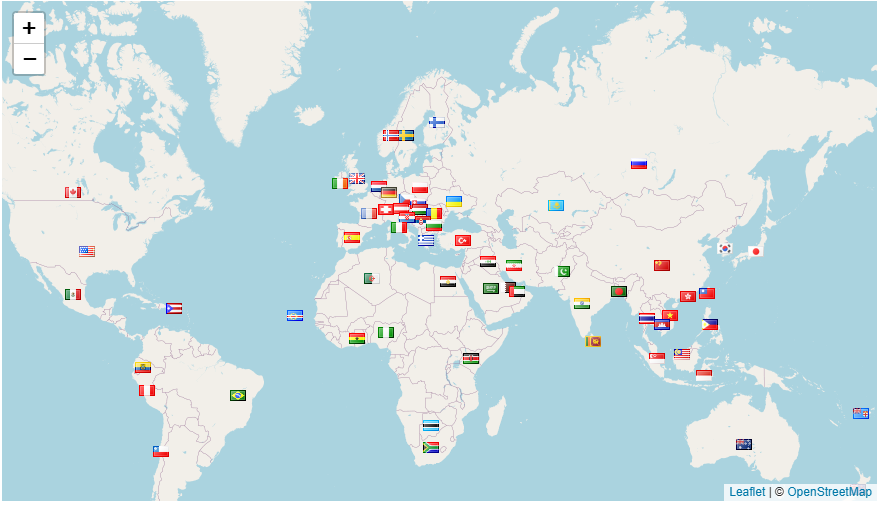Simulation of Heat Transfer Rate in Motorcycle Engine Cylinder with Variation of Distance Between Fins and Material
DOI:
https://doi.org/10.70822/evrmata.vi.12Keywords:
Cylinder block, fin spacing, heat transfer, perforation, SimulationAbstract
Cylinder blocks on motorcycles that do not use a radiator cooling mechanism generally use a fin mechanism around the motorcycle cylinder block. Fins on motorcycles are useful for spreading the heat from combustion from the inside out, so that the engine temperature does not heat up quickly. During the combustion process in the cylinder block can cause heat with a high temperature. If this heat is not immediately distributed around it will cause excessive heat and will cause over heating on the motorcycle, which can interfere with the performance of the motorcycle. Thermal analysis is often used to study heat transfer on many surfaces including fins, cylinder block of an internal combustion engine and also the material of the mold block. The engine cylinder with fins was designed using Autodesk Fusion 360 with different spacing between fins of 10 mm, 8 mm, 6 mm and 4 mm. The materials used for modeling in this study are Al 356 (cast alloy), AA 2014T6 (Wrought alloy), AA 1060 (Wrought alloy), cast iron with 2% nickel, AM60A-F (Cast alloy), Magnesium alloy (AZ63A), Aluminum 6061, Gray cast iron grade 20, Al 360 (cast alloy), Al 380 (cast alloy). The simulation results of the engine cylinder block made of cast iron with 2% nickel with fins having a spacing between fins of 4 mm and a cylinder perforation diameter of 4 mm on the fins are most suitable for a better heat transfer rate compared to the other materials used in this study
References
Kummitha, O. R., & Reddy, B. V. R. (2017). Thermal Analysis of cylinder block with fins for different materials using ANSYS. Materials today: proceedings, 4(8), 8142-8148..
Ibrahim, T. K., Mohammed, M. N., Mohammed, M. K., Najafi, G., Sidik, N. A. C., Basrawi, F., ... & Hoseini, S. S. (2018). Experimental study on the effect of perforations shapes on vertical heated fins performance under forced convection heat transfer. International Journal of Heat and Mass Transfer, 118, 832-846..
Chaitanya, P. S., Rani, B. S., & Kumar, K. V. (2014). Thermal analysis of engine cylinder fin by varying its geometry and material. IOSR Journal of Mechanical and Civil Engineering (IOSR-JMCE), 11(6), 37-44.
Dubey, D., Singh, D., & Thakur, H. (2017). Thermal Analysis of Engine Cylinder having thick tip fin with varying slot sizes and material. Materials Today: Proceedings, 4(8), 7636-7642.
Ehteshum, M., Ali, M., Islam, M. Q., & Tabassum, M. (2015). Thermal and hydraulic performance analysis of rectangular fin arrays with perforation size and number. Procedia Engineering, 105, 184-191.
Ibrahim, T. K., Mohammed, M. N., Mohammed, M. K., Najafi, G., Sidik, N. A. C., Basrawi, F., ... & Hoseini, S. S. (2018). Experimental study on the effect of perforations shapes on vertical heated fins performance under forced convection heat transfer. International Journal of Heat and Mass Transfer, 118, 832-846.
Jatnika, D., & Mudasir, H. (2021). Analisis dampak perubahan volume silinder sepeda motor 110 cc terhadap kinerja. Jurnal Online Sekolah Tinggi Teknologi Mandala, 16(1), 65-76.
Yunus, M. (2019). Analysis of Cylinder Block Ability to Piston Friction on Suzuki Shogun 125 Motorcycle Year 2014 at Yelhana Motor Workshop. Teknika Sains: Journal of Engineering Science,4(2), 37-44.
Martua Manik, I. C. (2022). Sifat Mekanis Paduan Aluminium A356 dengan Penambahan Unsur Tembaga Hasil Proses Gravity Casting. JTERA (Jurnal Teknologi Rekayasa), 201-208.
Ugender, S., Kumar, A., & Reddy, A. S. (2014). Experimental investigation of tool geometry on mechanical properties of friction stir welding of AA 2014 aluminium alloy. Procedia Materials Science, 5, 824-831.
Naief, T. M., & Rashid, K. H. (2016). Comparative Study for Anodizing Aluminum Alloy 1060 by Different Types of Electrolytes Solutions. In First Scientific Conference on Modern Technologies in Oil & Gas Refining (Vol. 1, pp. 10-16).
He, A., & Zeng, J. (2017). Direct preparation of low Ni-Cr alloy cast iron from red mud and laterite nickel ore. Materials & Design, 115, 433-440.
Khokhlova, J., Khokhlov, M., & Synyuk, V. (2016). Magnesium alloy AZ63A reinforcement by alloying with gallium and using high-disperse ZrO2 particles. Journal of Magnesium and Alloys, 4(4), 265-269.
Leon, J. S., & Jayakumar, V. (2014). Investigation of mechanical properties of aluminium 6061 alloy friction stir welding. International Journal of Students’ Research in Technology & Management, 2(04), 140-144.
Sheladiya, M. V., Acharya, S. G., & Acharya, G. D. (2022). Effect of microstructure on the hardness of ASTM A48 class 20 flaked graphite cast iron. International Journal of Cast Metals Research, 35(4), 73-83.
Sathishkumar, S., Kannan, S., & ThirumalaiKumar, S. (2017). Material Behaviour of Aluminum Al 360 Alloy Hollow Ring Preforms. Journal of Mechanical Engineering Research and Developments, 40, 595-610.
Obiekea, K. N., Aku, S. Y., & Yawas, D. S. (2014). Effects of pressure on the mechanical properties and microstructure of die cast aluminum A380 alloy. Journal of minerals and materials characterization and engineering, 2(03), 248.
Umurani, K., Nasution, A. R., & Irwansyah, D. (2021). Heat Transfer and Pressure Drop in a Quadrilateral Channel with 90 Degree V Ribs. Journal of Materials Engineering, Manufacturing and Energy, 4(1), 37-46.
Sathishkumar, S., Kannan, S., & ThirumalaiKumar, S. (2017). Material Behaviour of Aluminum Al 360 Alloy Hollow Ring Preforms. Journal of Mechanical Engineering Research and Developments, 40, 595-610.
Faizal, A., Wahyudi, S., & Gapsari, F. (2021, June). Analysis of Heat Transfer and Performance on Motorcycle Engine Fins by Varying Air Velocity. In SENASTER "National Seminar on Applied Technology Research" (Vol. 2, No. 1).






